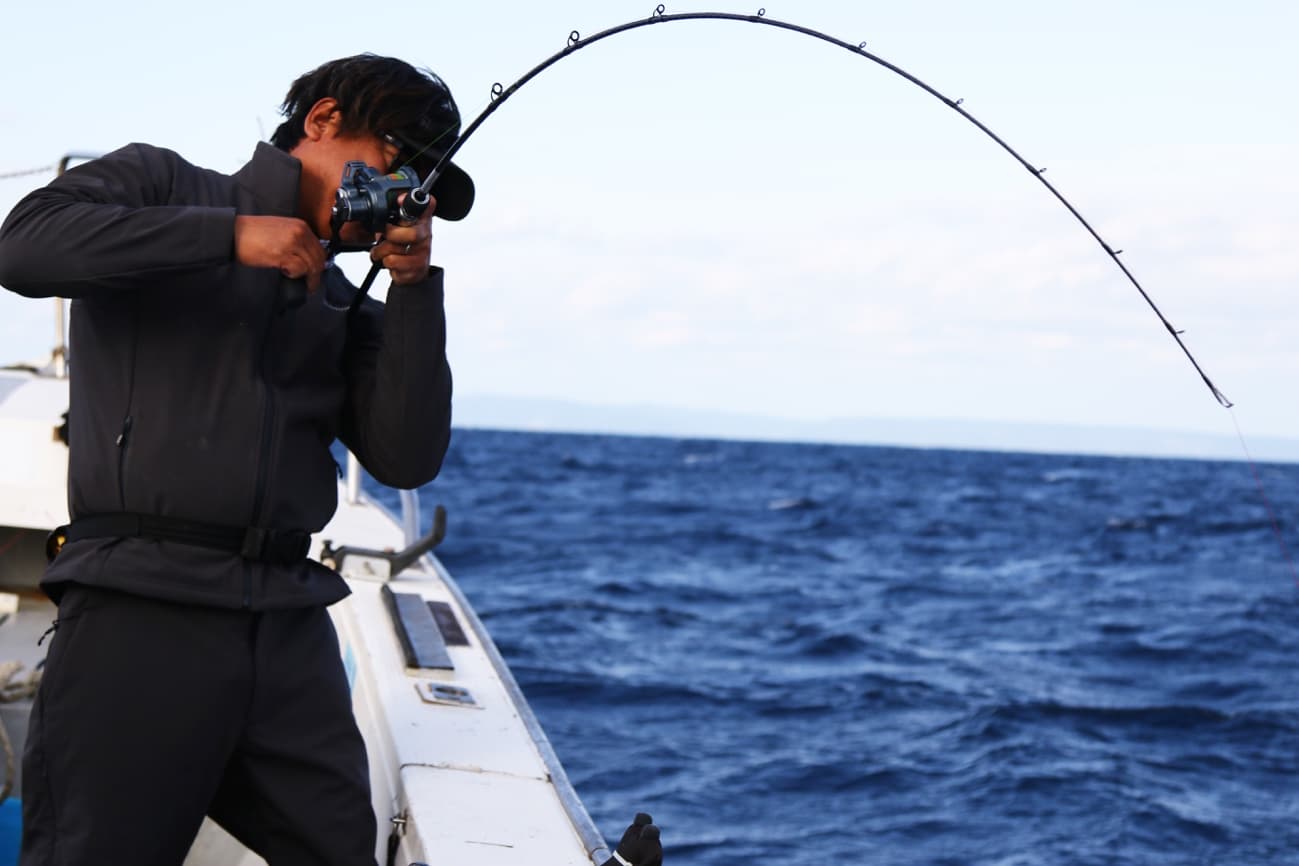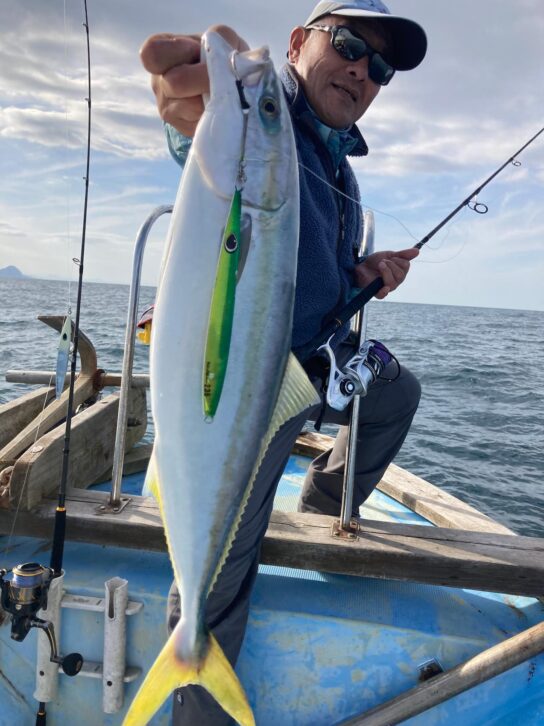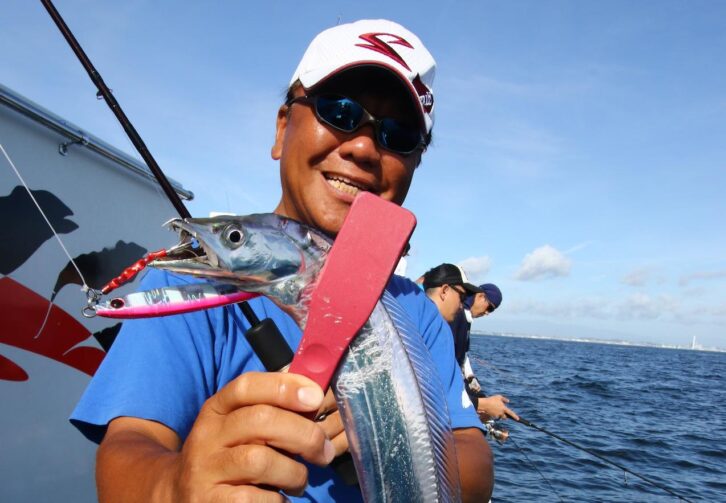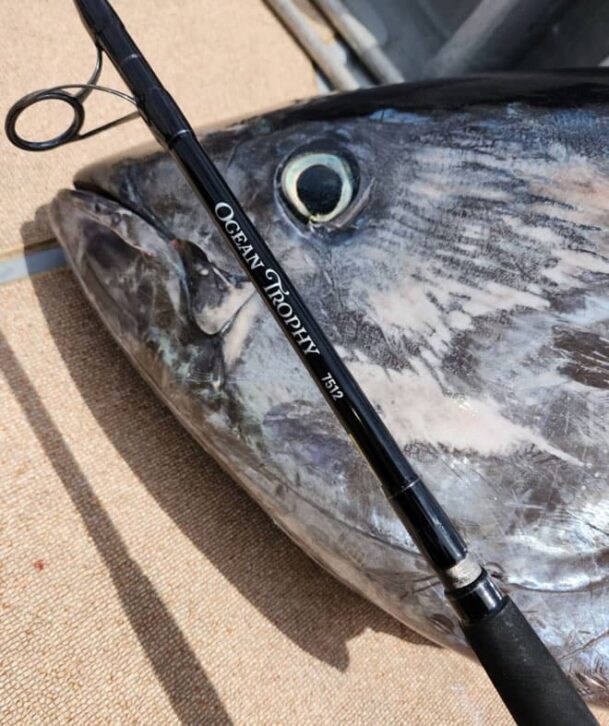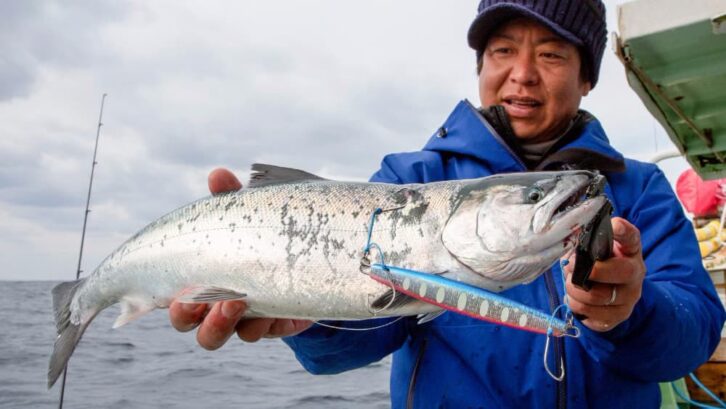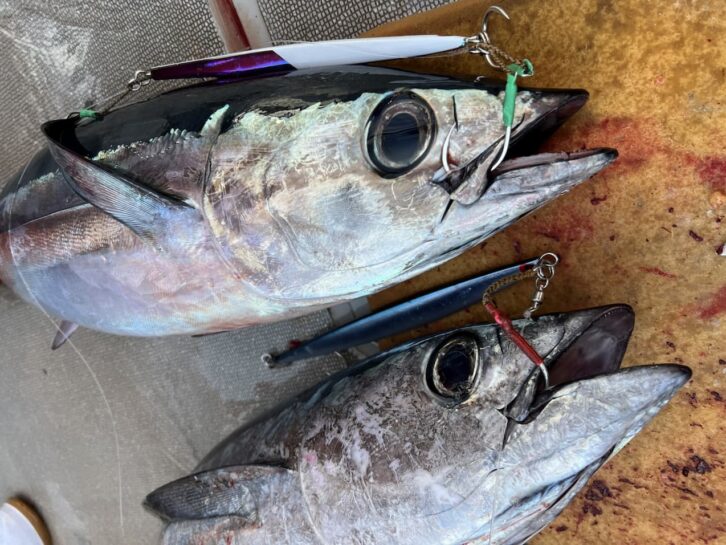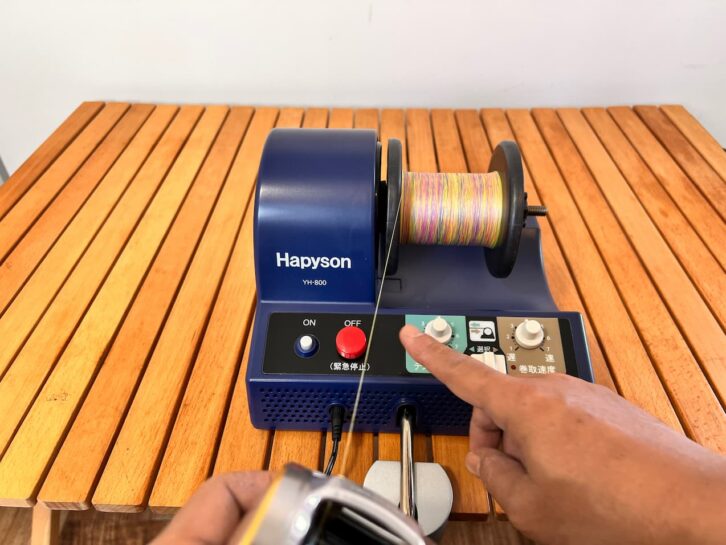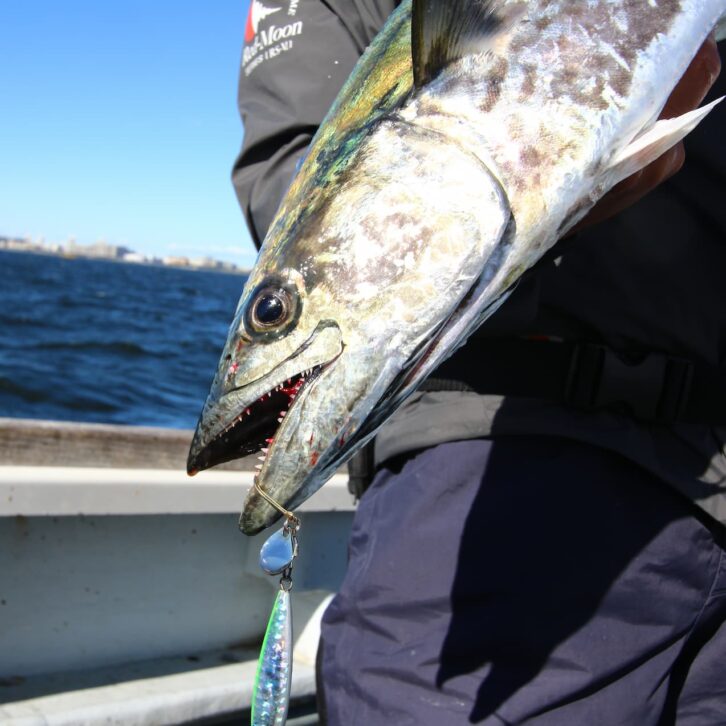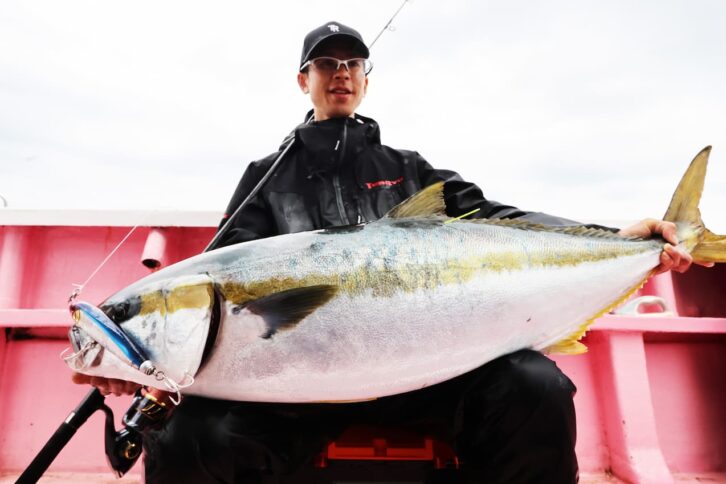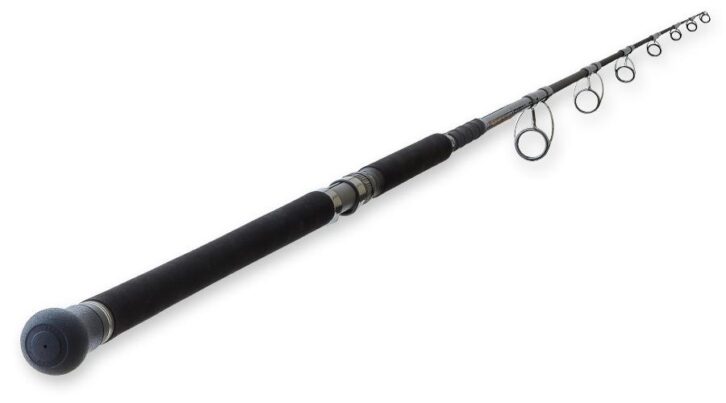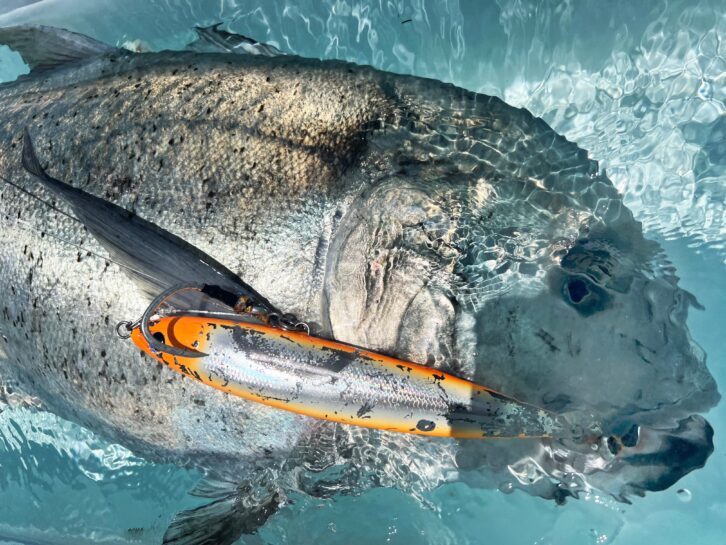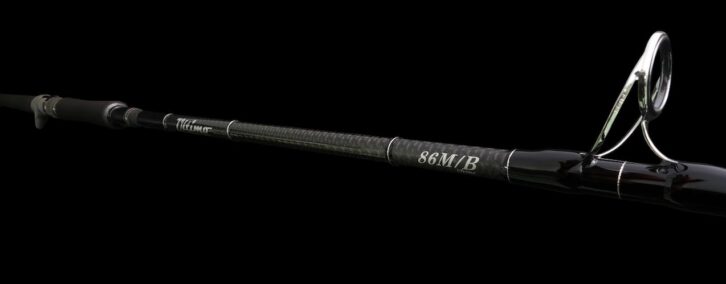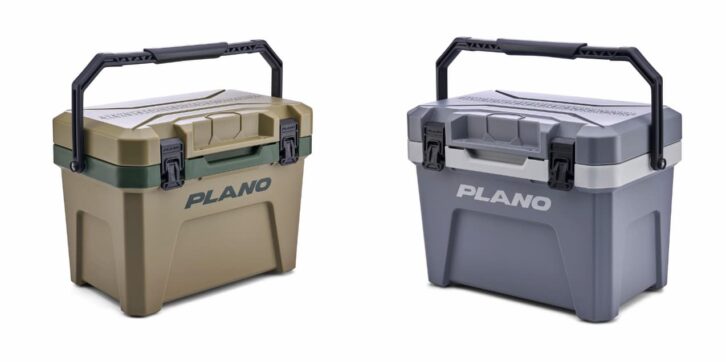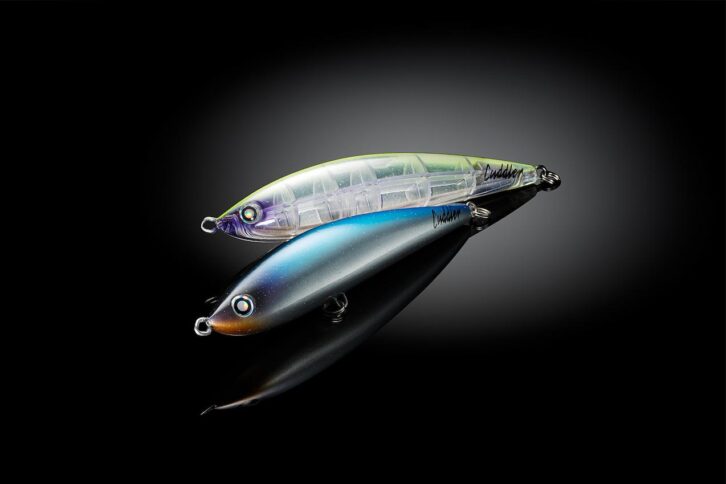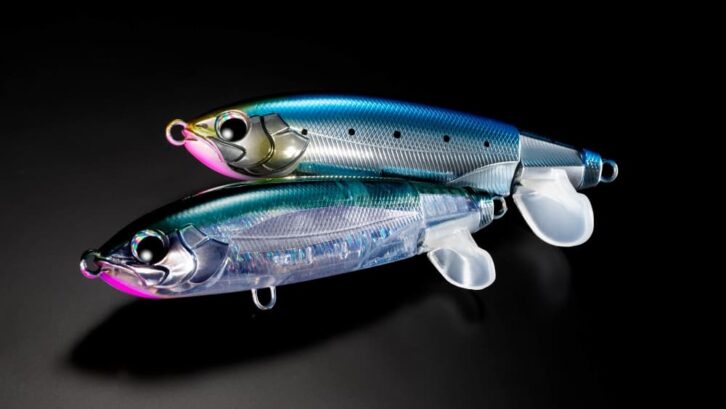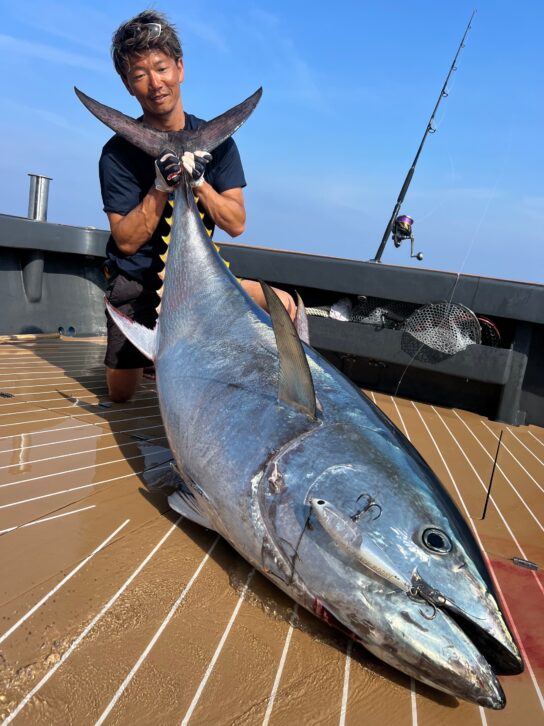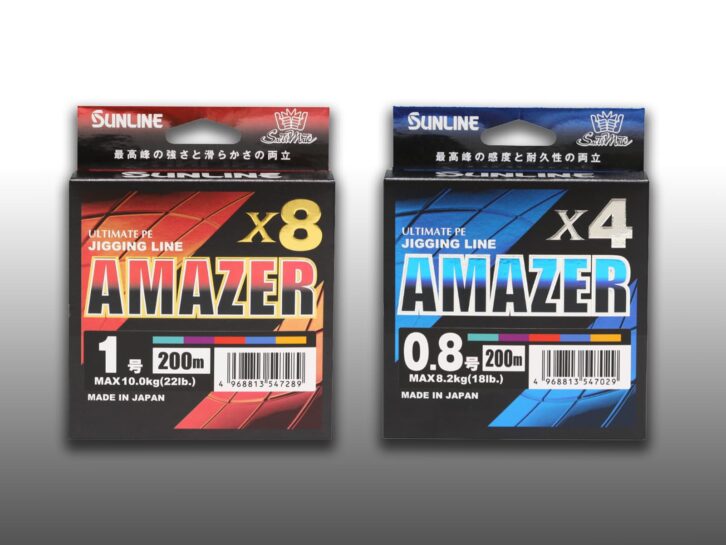Brushed up to a performance good enough for expeditions
The renewed Shimano GRAPPLER series. With the new “Type Slow J”, which can handle large fish Hiroto Yamamoto takes on the challenge of catching big fish in Amami Oshima Island
Shimano's offshore rod GRAPPLER series is offered at a price range that can be picked up by a wide range of anglers. The series is offered in jigging, light jigging, SLJ, slow jigging, and casting, but it has been renewed and introduced as a more globally active model. Mr. Keito Yamamoto, who was in charge of testing the slow model “Type Slow J,” went to Amami Oshima Island, where there is a possibility of hitting a large fish, to make a final check. He explained it to us through actual fishing.
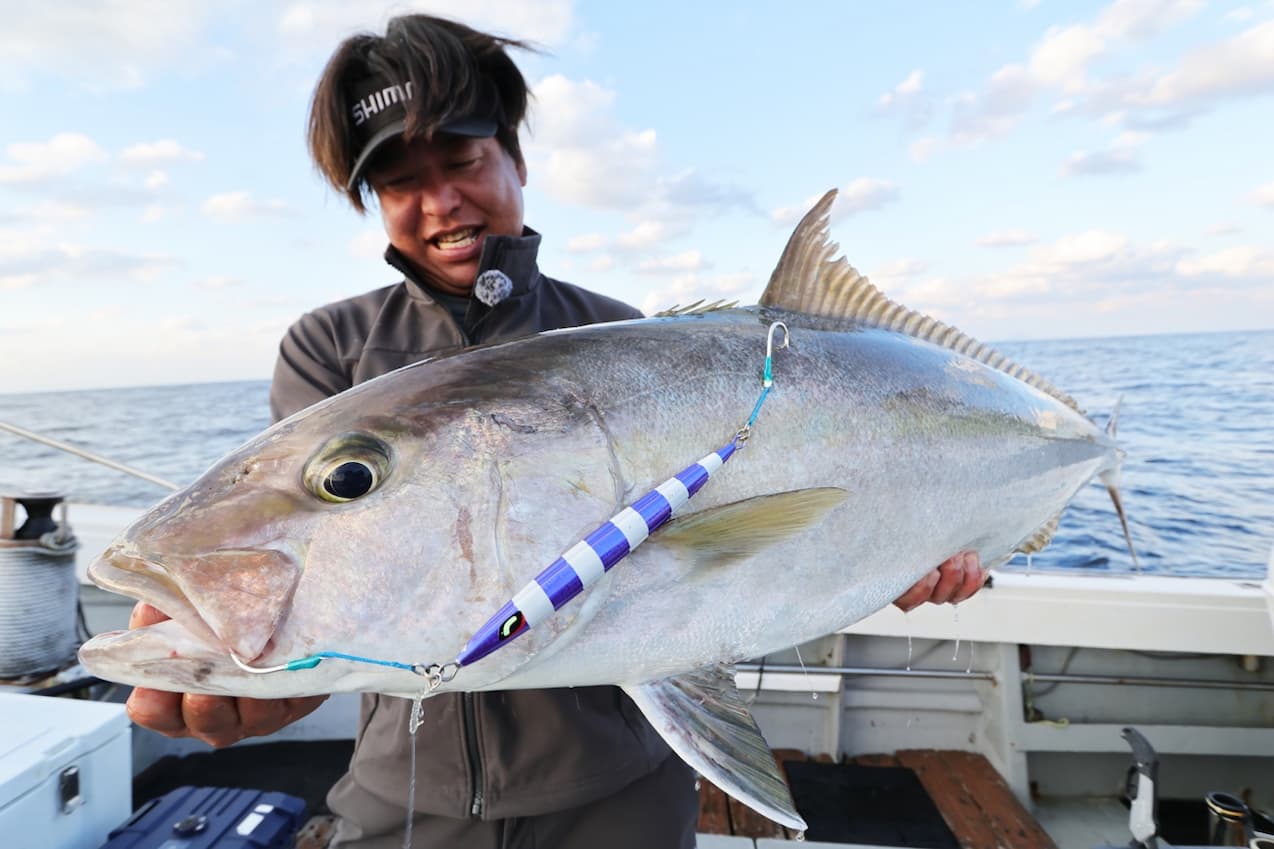
INDEX
- Challenging big fish with the GRAPPLER Type Slow J
- Thoughts on Large greater amberjack
- Performance above the standard level
- Target Fishing Size
- Newly designed for large fish
- Performance of the new GRAPPLER Type Slow J
- Proof of the rod’s performance
- Why Type Slow J is recommended and the results of the third day’s fishing
- How to use the different types of lures.
Challenging big fish with the GRAPPLER Type Slow J
Shimano’s GRAPPLER series offshore rods are popular among anglers of all skill levels because they are reasonably priced but have the performance to perform well, and are recommended for beginners, newcomers to the category, and as sub rods. This model is positioned as the “standard rod” among Shimano’s offshore rods. The performance of the GRAPPLER has been improved with each renewal, and all models will be introduced at the end of 2024 with even higher performance in order to make offshore fishing more enjoyable for anglers all over the world.
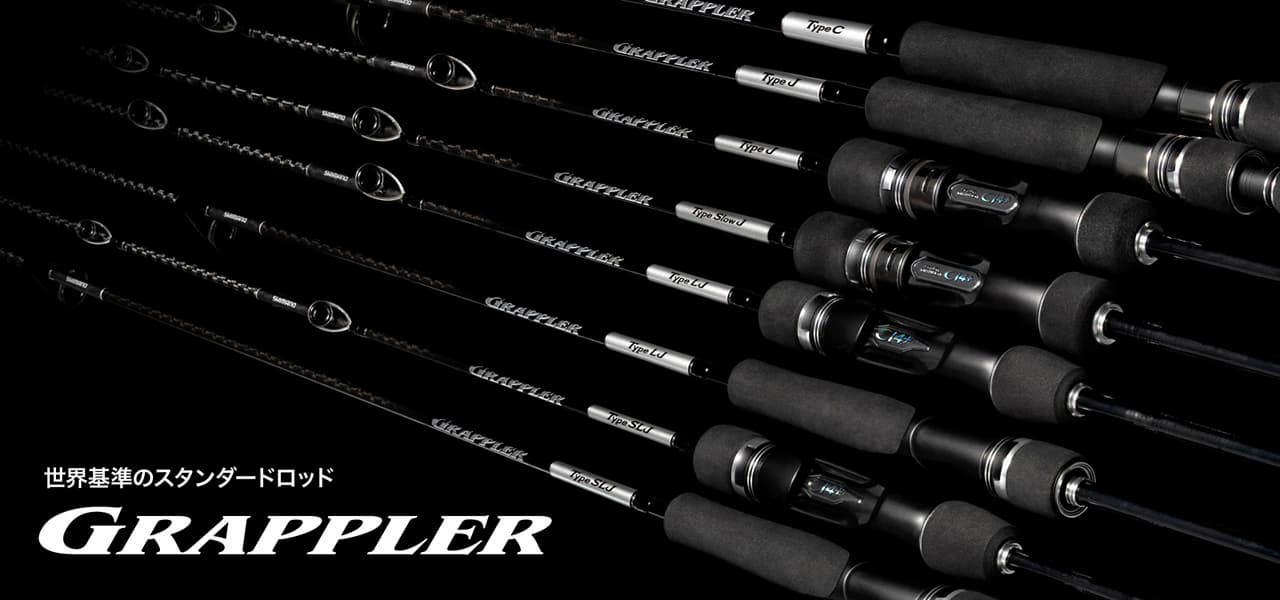
https://fish.shimano.com/ja-JP/product/rod/offshoresalt/slowjigging/a075f000041qgttqas.html
As in the past, the new lineup covers almost all aspects of offshore fishing, including jigging, light jigging, SLJ, slow jigging, and casting. Among them, Mr. Hiroto Yamamoto was in charge of development and testing of the “Type Slow J,” a light jigging model. Mr. Yamamoto, who is involved in the development of all Shimano’s slow rods, took the GRAPPLER Type Slow J to Amami Oshima Island to fish for large greater amberjack, dogtooth tuna, and large root fish. When fishing for big game fish on an expedition, you want to use a rod that you can trust. However, many people find it difficult to have several flagship rods. The purpose of this fishing trip was to show that the new GRAPPLER Type Slow J can handle big fish very well.
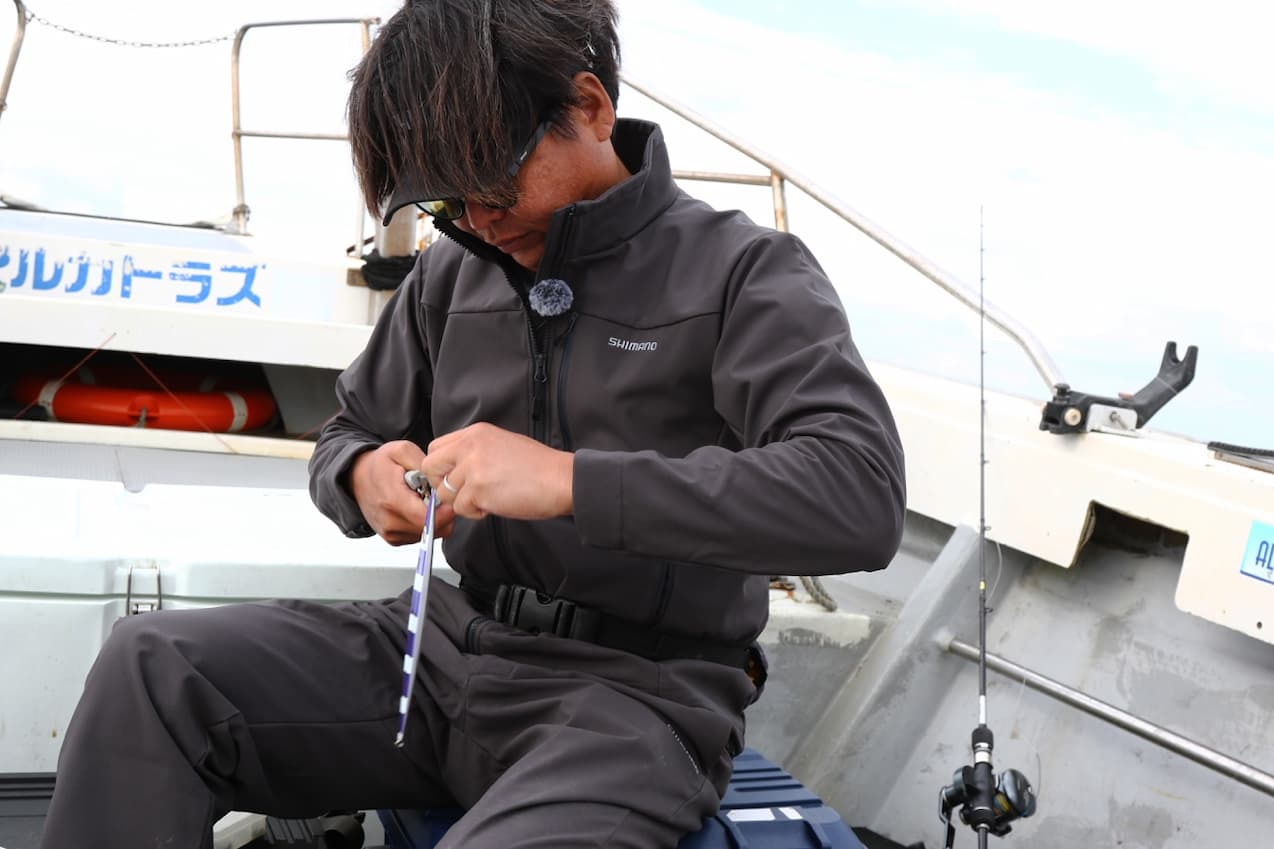
Mr. Hiroto Yamamoto visited Amami Oshima Island with full of spirit on a mission to hook and catch a big fish to show the power of the new rod.
Thoughts on Large greater amberjack
Hiroto Yamamoto handles a variety of fishing techniques, but the one that he uses the most as a weapon in his arsenal is slow jigging. From light targets in coastal waters to big fish on fishing expeditions, he skillfully manipulates jigs to produce results. Among the many species of fish that Mr. Yamamoto fishes for, he is most interested in the large-sized greater amberjack, which can weigh more than 50 kg, have a powerful pull when they hit, and are difficult to catch due to root displacement and hook-outs. He targets such large greater amberjack, dogtooth tuna, and good size Rootfish in the waters around Amami-Oshima Island. Amami Oshima Island has been known since the early days of jigging as a field where large fish can be targeted, and many anglers have been going there and have a good record of catching large fish. Mr. Yamamoto has also tried this area many times.

The waters around Amami Oshima Island are known to produce many large greater amberjack. However, it is not easy. You only have a few chances a day. And with large fish, it is up to the angler to make a split-second decision on whether or not to catch them. The performance of the tackle is also an important factor in catching fish.
Performance above the standard level
Incidentally, the GRAPPLER Type Slow J is the same as Shimano’s flagship slow jigging rods, the OCEA Jigger Limited, the OCEA Jigger ♾️ (Infinity), the OCEA Jigger ♾️ Motive, and the one-rank lower Game Type Slow J. The GRAPPLER Type Slow J is the same as Shimano’s flagship Slow Jigging rod, the OCEA Jigger Limited. The “Game Type Slow J” is one rank lower, and the standard models are the “GRAPPLER Type Slow J” and the “GRAPPLER BB Type Slow J”.
The original positioning of the GRAPPLER Type Slow J among Shimano’s slow rods was that it was a middle-class rod, and therefore for beginners and entry-level anglers, but this new model seems to have raised the bar in performance. Considering the possibility of launching it globally in the United States, Europe, the Middle East, and Asia, we have gone beyond the beginner’s category. The most important thing we focused on was to create a model that is delicate yet powerful. We pursued power and resistance to breakage, as many people overseas are very strong. While keeping these things in mind, this new model has performance similar to GRAPPLER’s higher-end model, the Game Type Slow J. “It’s quite good, and I highly recommend it. Quite a good, highly recommended rod.”
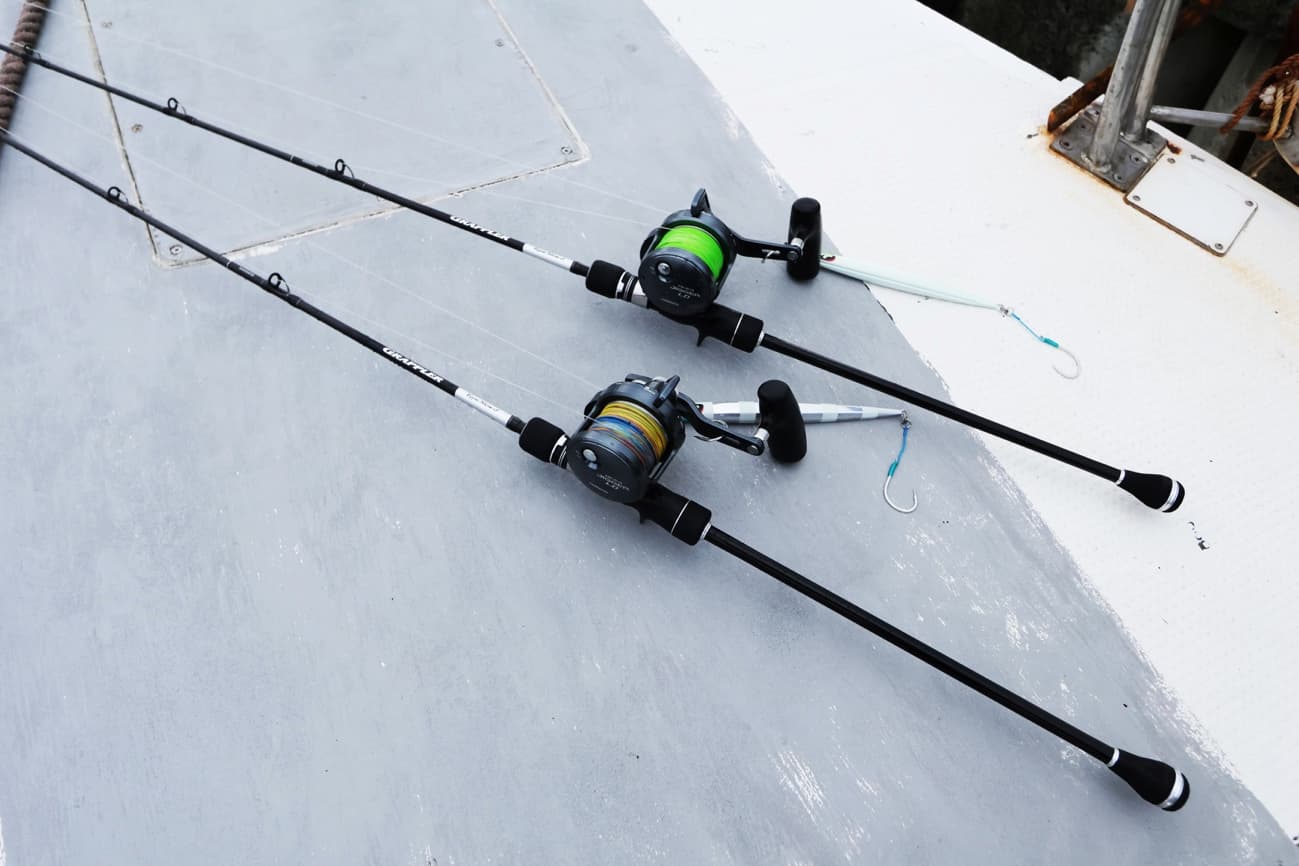
Because it is a slow rod, it needs to be sensitive, but it also needs to be powerful if it is used against large fish. If you plan to use it overseas, you also want it to be more reliable and powerful. The completed GRAPPLER Type Slow J is equipped with all these features.
Target Fishing Size
The fishing trip was planned to last four days and three nights. However, our original plan was cancelled due to a snowstorm, so we rescheduled the same number of days, but due to weather conditions, we had to stay on the boat for two nights and three days. Furthermore, the wind had an effect on the fishing, limiting the number of points to a limited number.
After arriving at Amami Oshima, we set sail a little after noon. When asked “What is your goal this time? Mr. Yamamoto answered, “First of all, 15 kg of greater amberjack. Of course, he is always aiming for 20kg, 30kg, 40kg, 50kg, and even bigger. The boat entered the deep waters on the east side of Amami Oshima, where there is a good record of catching large greater amberjack. The depth was 205 m. On signal, we attached a 350 g OCEA Stinger Butterfly Pebble Stick and dropped it. The rod was a GRAPPLER Type Slow J 66-6, the reel was an OCEA Jigger LD 2500HG, the line was an OCEA Jigger MX4 PE #4, and the leader was an OCEA Leader #22.
And he got a hit on the first cast. The fish moved quickly from the bottom to about 10 meters, and after a big shove up, the fish took the jig into its mouth. It was a hit that made me think, “That’s a good catch! It was a hit that made us think, “That’s it! However, the fish regrettably hooked out. However, we could confirm that the fish was moving. All I had to do was to keep on shucking without resting.
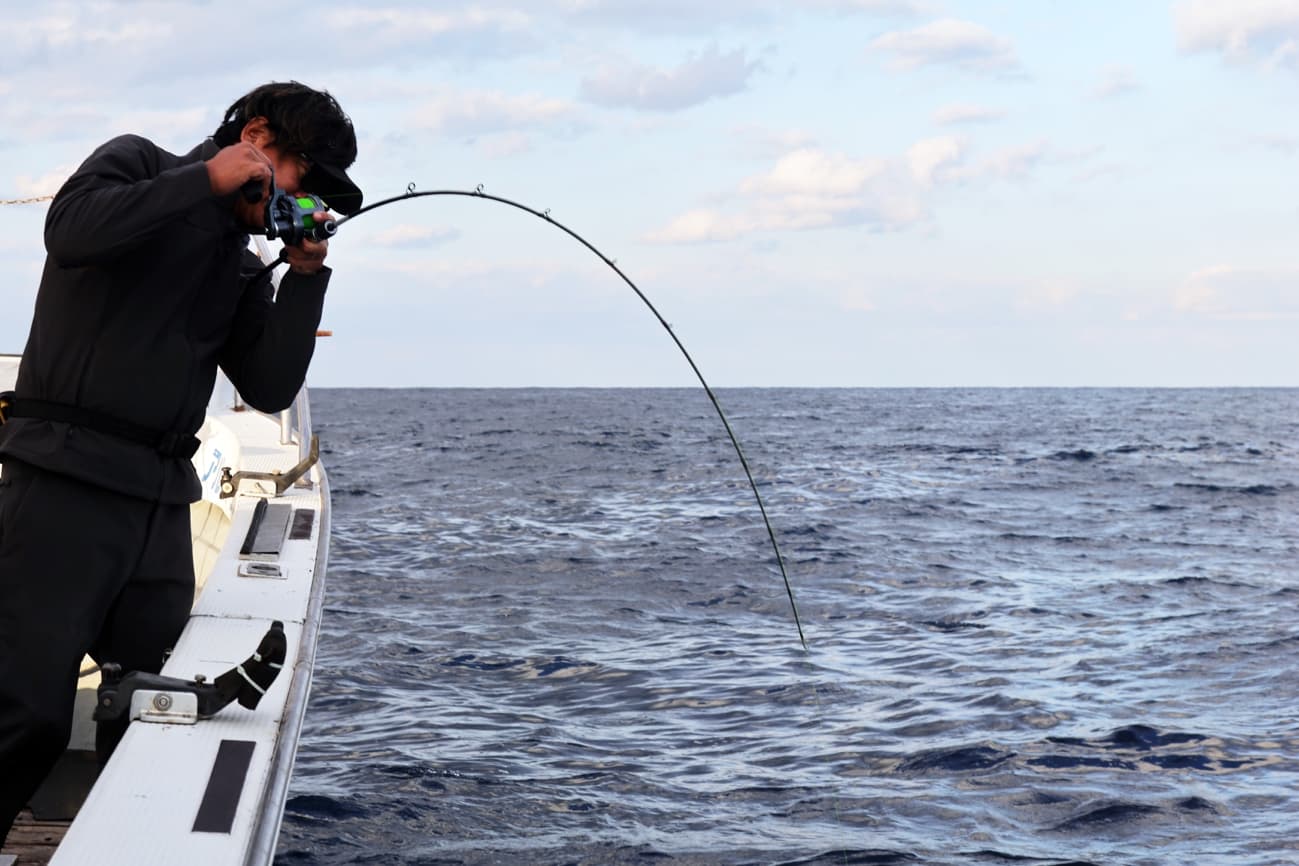
At a depth of 205 meters, I rigged a 350g Stinger Butterfly Pebble Stick jig and got a hit early on. Although it was a close call, the fish hooked out, but it was a hit that gave us high hopes for this fishing trip.
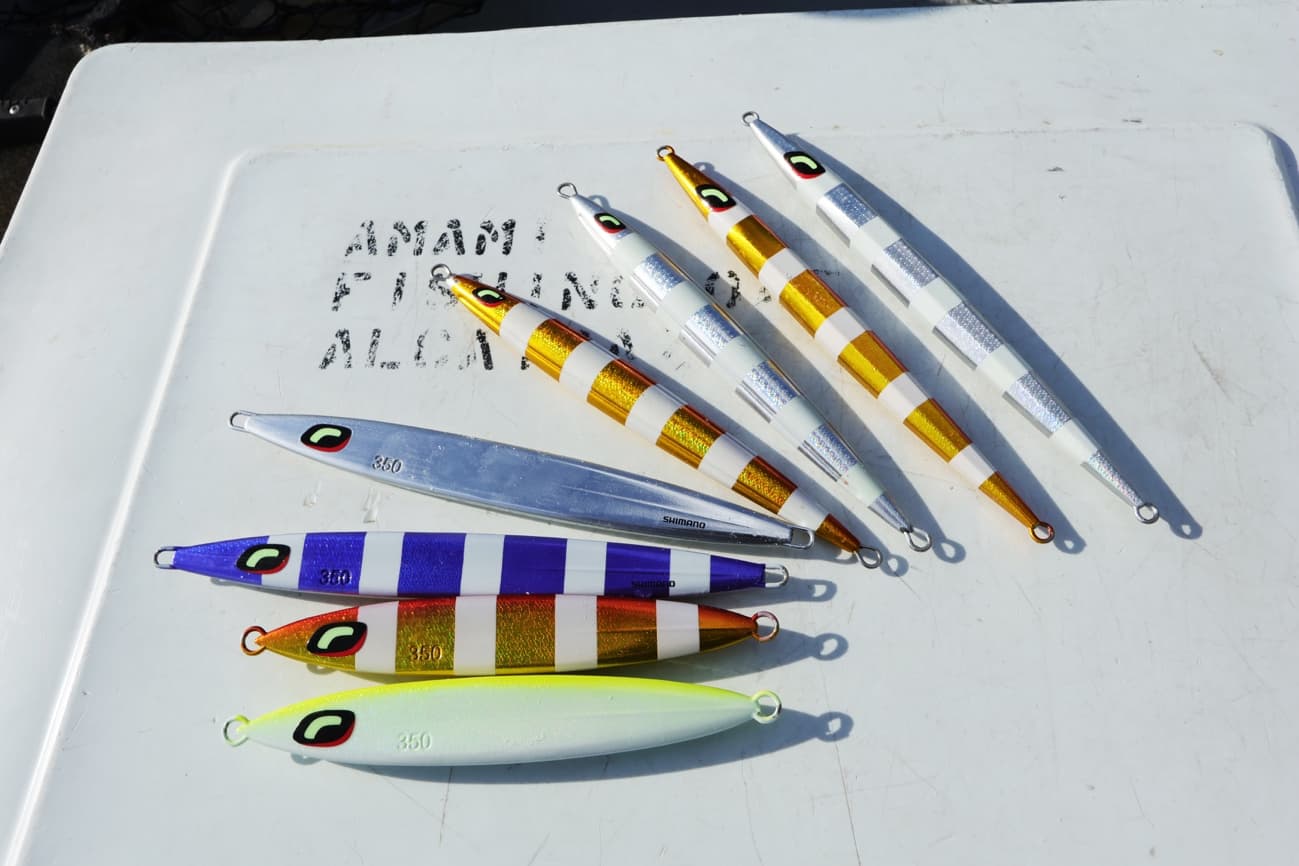
Jigs were mainly Pebble Stick, but also Long Weber and Sardine Weber were used.
Newly designed for large fish
The first model Mr. Yamamoto picked up this time was No. 6. While GRAPPLER’s Type Slow J had been available up to No. 5, this new model is the strongest model in the series and can handle a maximum jig weight of 500g. It is clear that this model was developed with a greater awareness of globalization and to be able to handle large fish overseas. Of course, the lineup has also expanded its field of application in Japan as well.

A new No. 6 has been added to the lineup. This new lineup is more suitable for large fish fishing expeditions.
“Up to now, the series had been limited to No. 5.
The series has been limited to No. 5 up to now, but now No. 6 has been added. But now, No. 6 has been added to the lineup. No. 4 and No. 5 can also be used on fishing expeditions, but there are situations where it is difficult to use them due to water depth, current, etc. With the addition of No. 6, we are now able to produce a snappier jerk. When targeting big fish such as greater amberjack, even the GRAPPLER Type Slow J can be used with No. 5 and No. 6 to attack them differently. So I am now firmly in the select criteria.”
On the first day, he caught only a 5-kg greater amberjack and a few other guests. He had already gotten accustomed to the fishing. The next day and the day after that, he decided to bet on the next day.
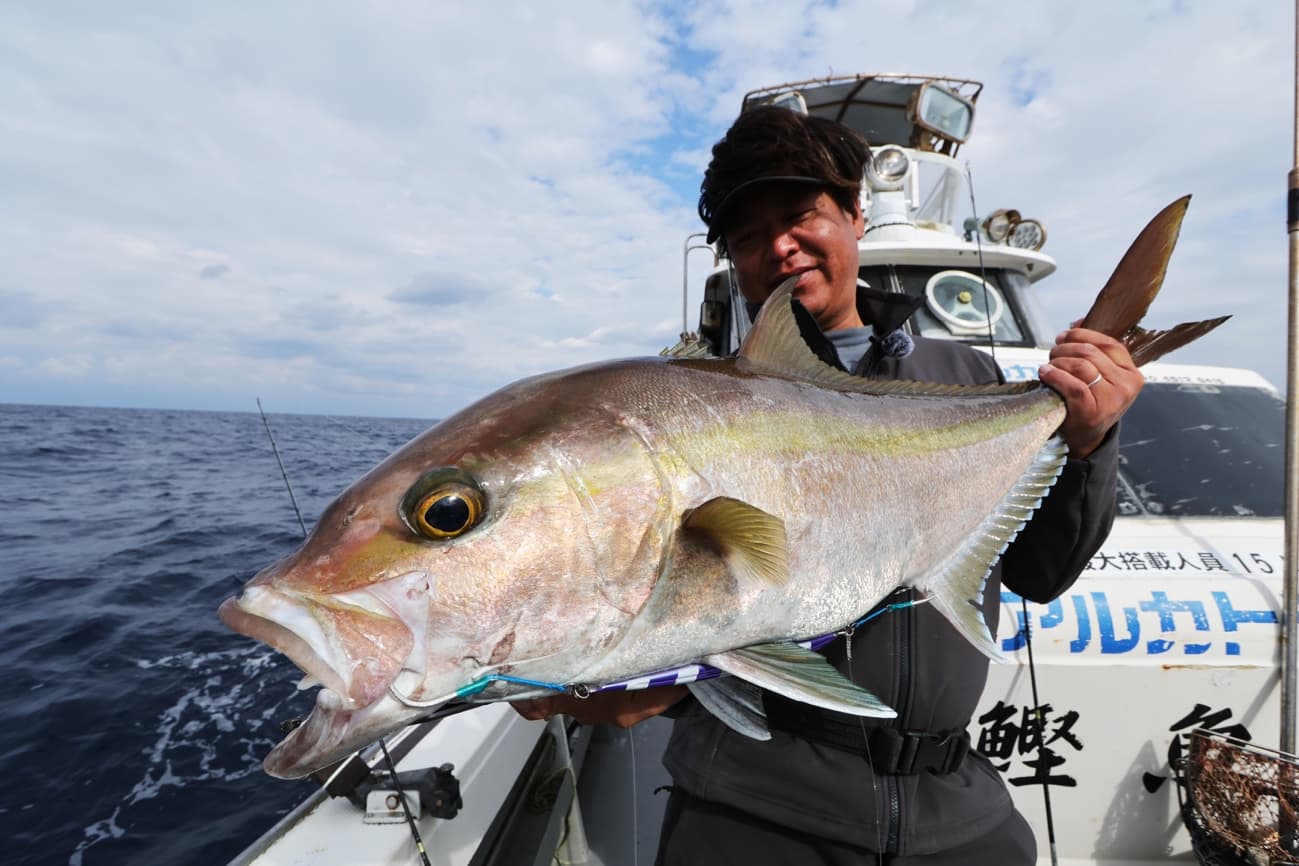
On the first day, we got a good hit, a 5 kg class fish, but it was a relief. After that, we kept on shovelling in search of a big one.
Performance of the new GRAPPLER Type Slow J
With the addition of the No. 6 model, all models of the GRAPPLER Type Slow J have been upgraded, but how have the other features of the new model changed?
First of all, the blank is composed of Spiral X and High Power X as in the previous model, but with even more strength. It is an image of taking the best parts of the Game Type Slow J. The response when jerking has been improved, and the rod is stronger than the previous model. It has an increased response when jerking and automatic tip return performance, and has enhanced automatic performance similar to the higher-end Game Type Slow J model. As such, I think the performance is satisfactory for both beginners and experienced anglers of slow fishing.”
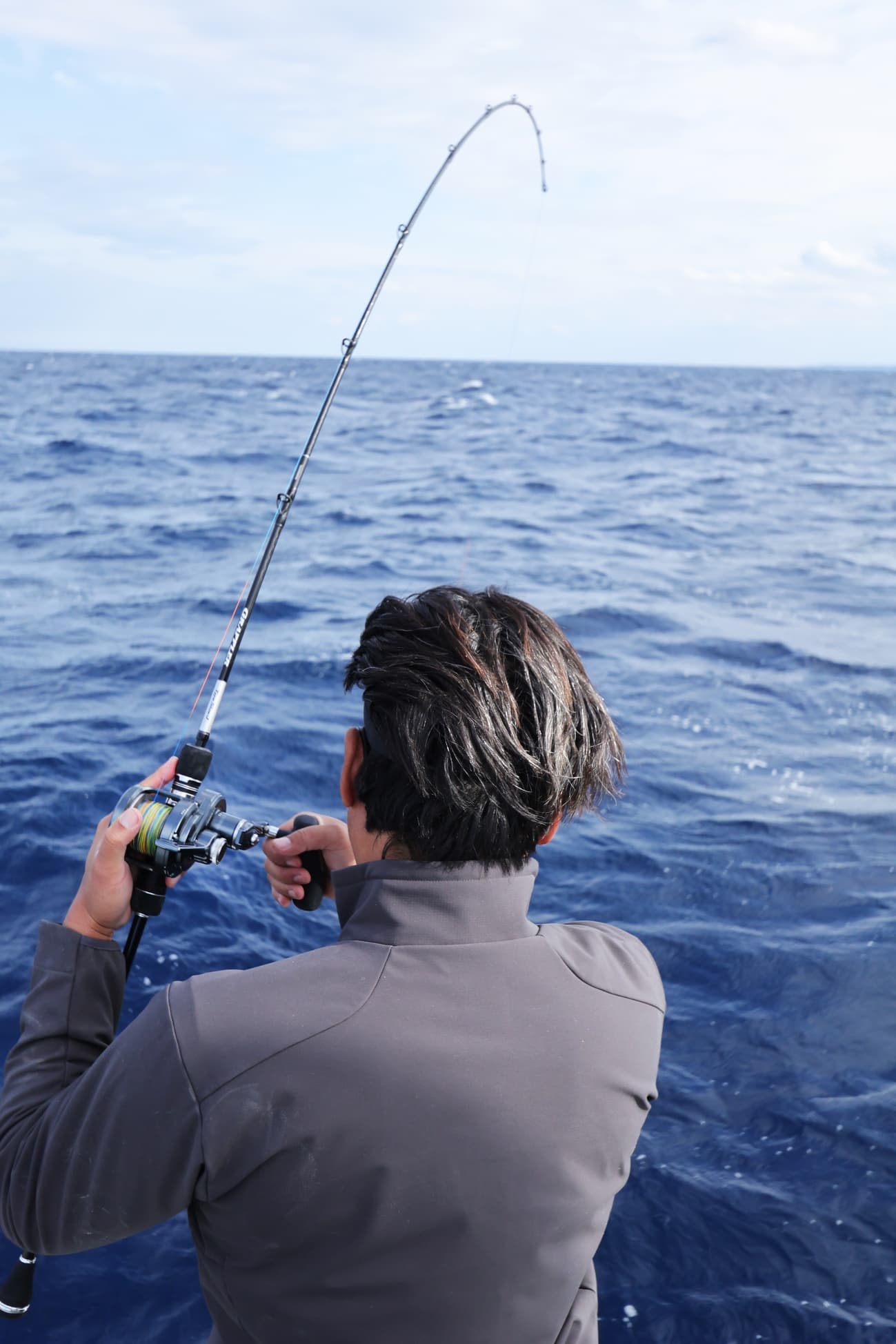
The response of jerking is increased, and even heavy jigs can be manipulated without difficulty. It is easy to use for beginners, and even those who are experienced slow fishermen will be satisfied with its performance.
The length has been changed from 6′ 8“ to 6′ 6”. What is the intention behind this change?
The new length makes it easier to adjust the width of the fall, improves the jerk response, and makes both the up and down action smoother. We also adjusted the bend during action and fighting so that the angler does not have to bear the burden as much as possible. The angler can continue to jerk the lure with ease, and after the fish is hooked, the lure can be bent and lifted with ease.
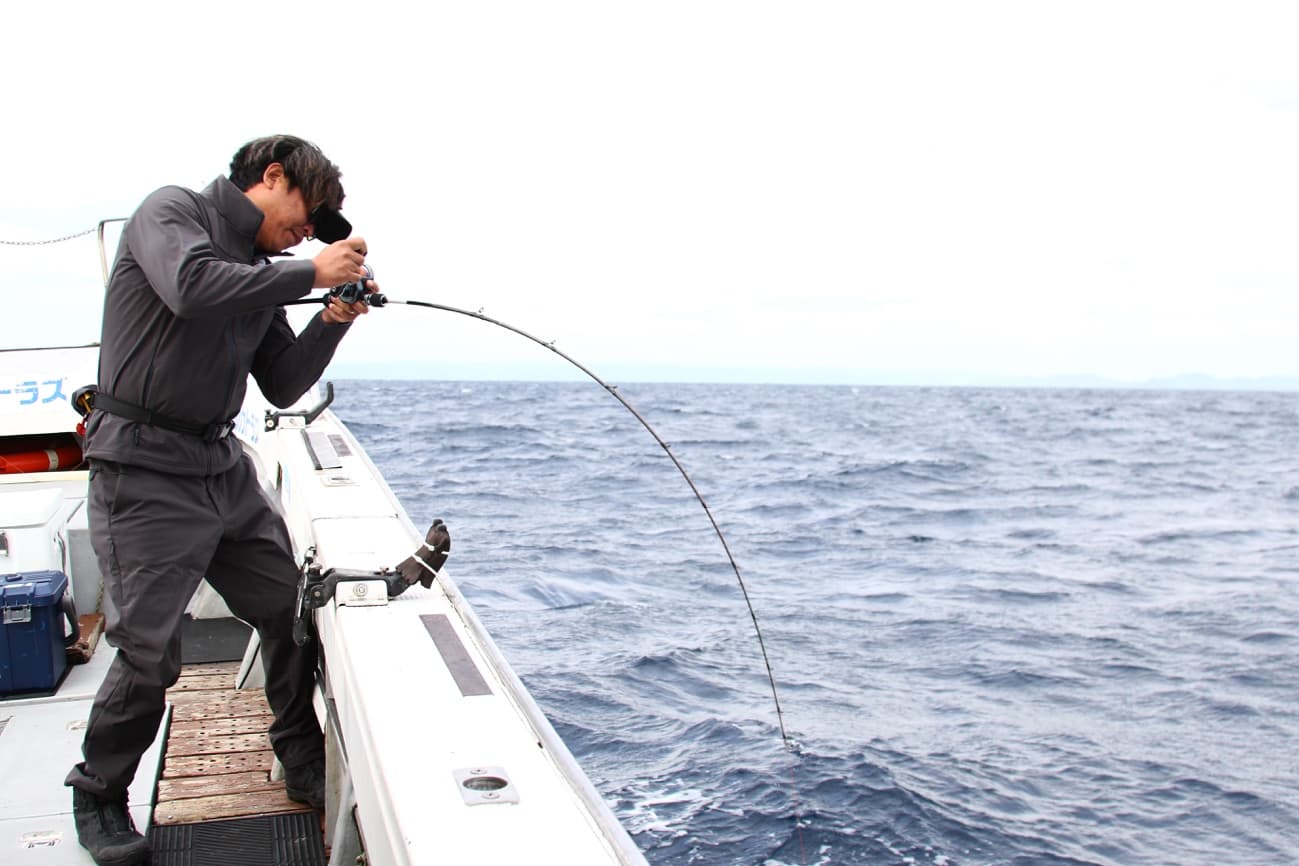
Not only can you manipulate the jig, but you can also bend it firmly to respond after a fish is hooked and raise the fish with ease.
Another feature of this new model is that it uses a full holding reel seat, which is used in flagship models such as the OCEA Jigger Limited and Infinity. This reel seat is made of Cl4+, a lightweight, high-strength carbon material, and is Shimano’s original design that can be used in a variety of gripping styles.
The full holding seat makes it easy to grip, provides sensitivity, and leads to even greater jerking accuracy. It’s easy to grip even with a larger reel attached when targeting larger fish.”
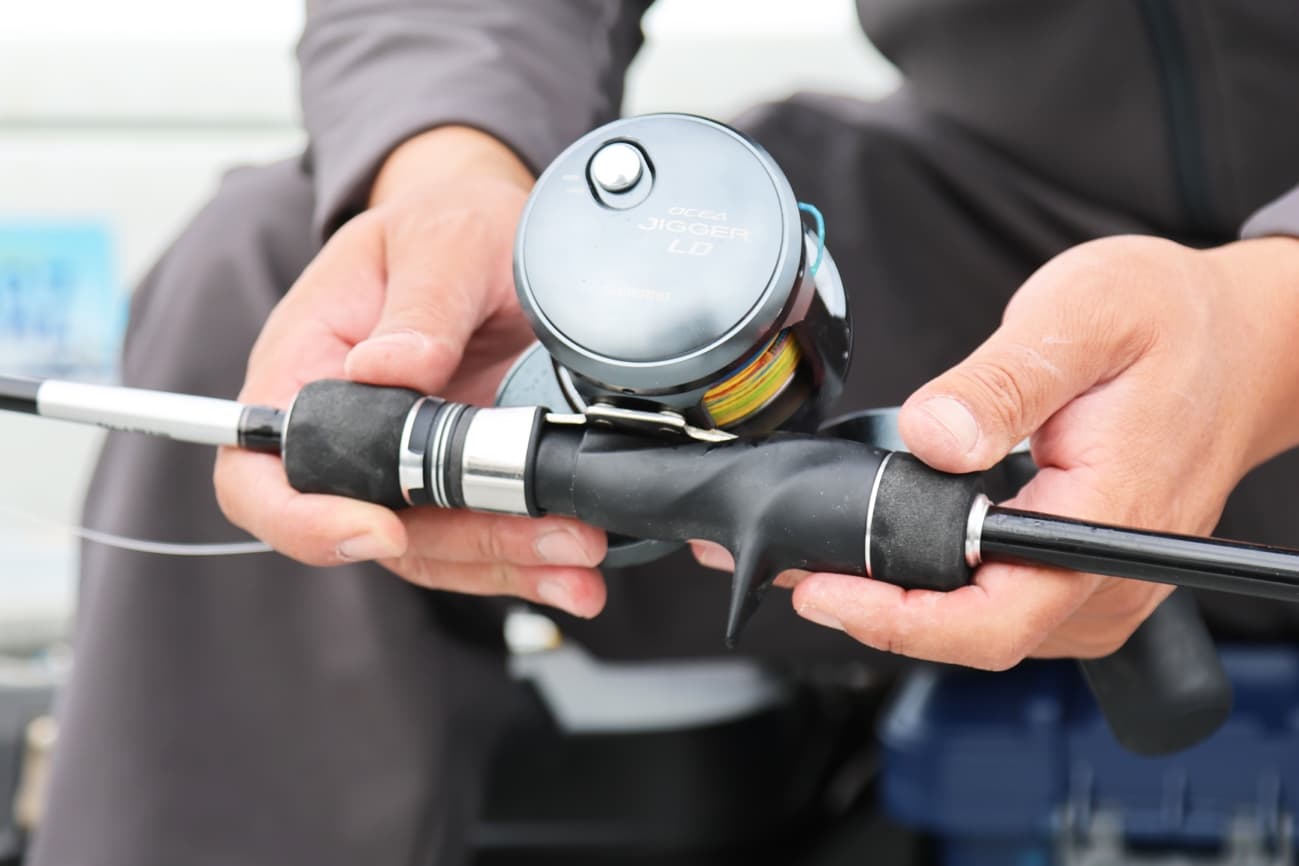
The full holding seat, similar to the flagship model, makes it less tiring and even more sensitive. It allows anglers to better grasp what is going on underwater and what the jig is doing.
Proof of the rod’s performance
On the second day, we moved the fishing site to the south of Amami Oshima Island to explore the area. The No. 6 rod was used in deep water (around 200 m), and the No. 5 rod was also used in shallow water. On this day, we explored shallow areas of 120 to 130m in the morning. And here, we were caught by dogtooth tuna. There was even a line break caused by a tooth of a dogtooth tuna. But we did well, and caught a 16-kg aeolian tuna.
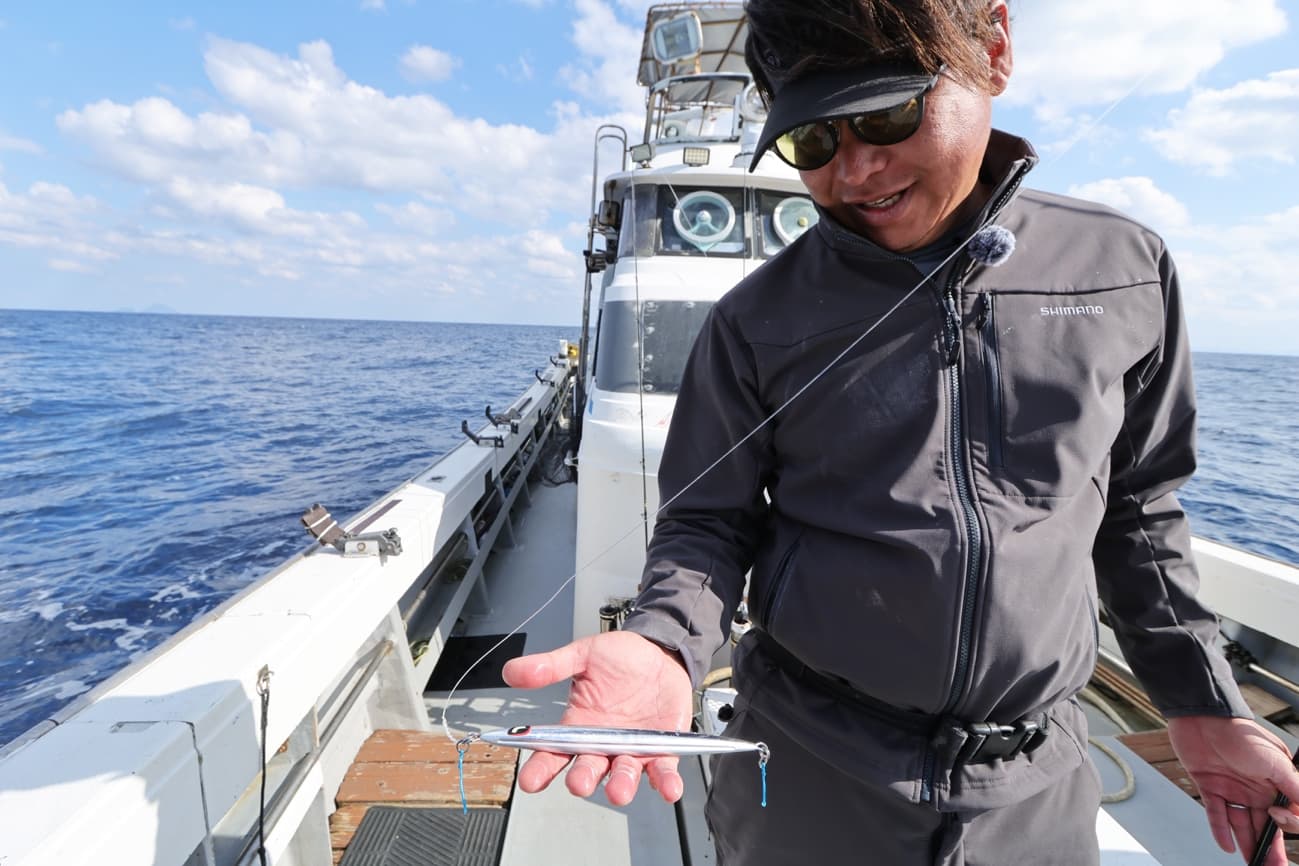
The jig was torn to pieces by the dogtooth tuna, and the assist hook was also cut off. However, he did not give up and continued to fish.
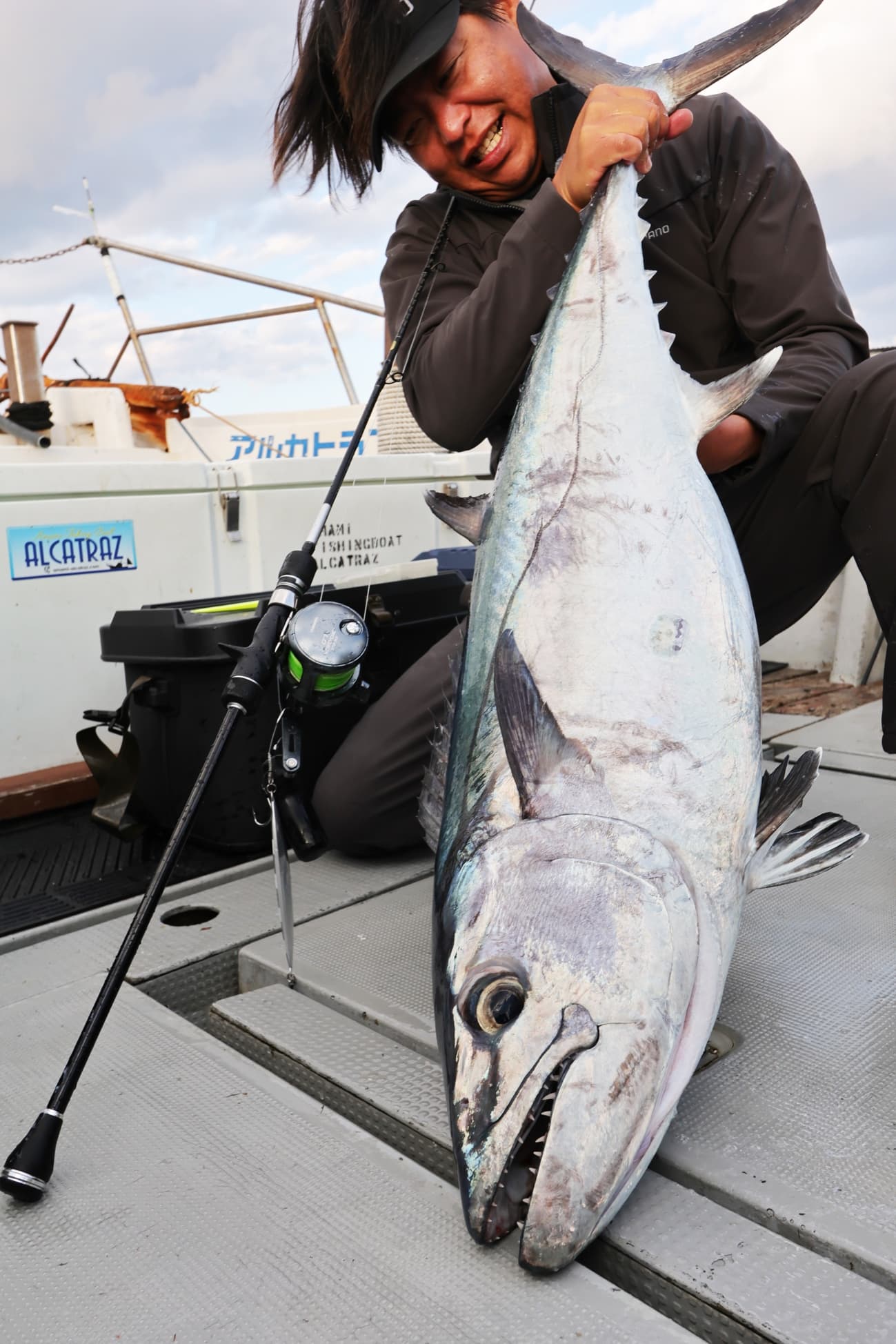
Mr. Yamamoto was troubled by small dogtooth tuna, but he pulled out a nice-sized dogtooth tuna from among them, and his No. 6 rod firmly caught the power of the tuna.
In the afternoon, the tide slowed and the bites became more distant. Even so, the anglers were able to add a few more guests, including greater amberjack weighing up to 5 kg, bonito, and root fish, by skillfully manipulating jigs. The climax of the day came at 16:49, during midsummer. The bite came after a few shucks from the bottom. At the same time, a strong pull was felt as it plunged toward the bottom. I quickly adjusted the lever drag of the OCEA Jigger LD to stop the bite, and kept reeling it in when I could. If the initial drag is too strong, the first plunge will lead to a break. Set the drag to a certain value, and then quickly and gradually add drag. After a few minutes of back-and-forth, a good-sized greater amberjack appeared on the surface of the water.
Good! I achieved my goal! The new GRAPPLER is strong. I can feel its power when I’m manipulating a jig, but I can also feel its power after the fish is hooked. It’s a rod that catches fish well.
The rod weighed 15 kg. He had achieved his first goal.
Now, let’s go for the next one, 20kg, 30kg!

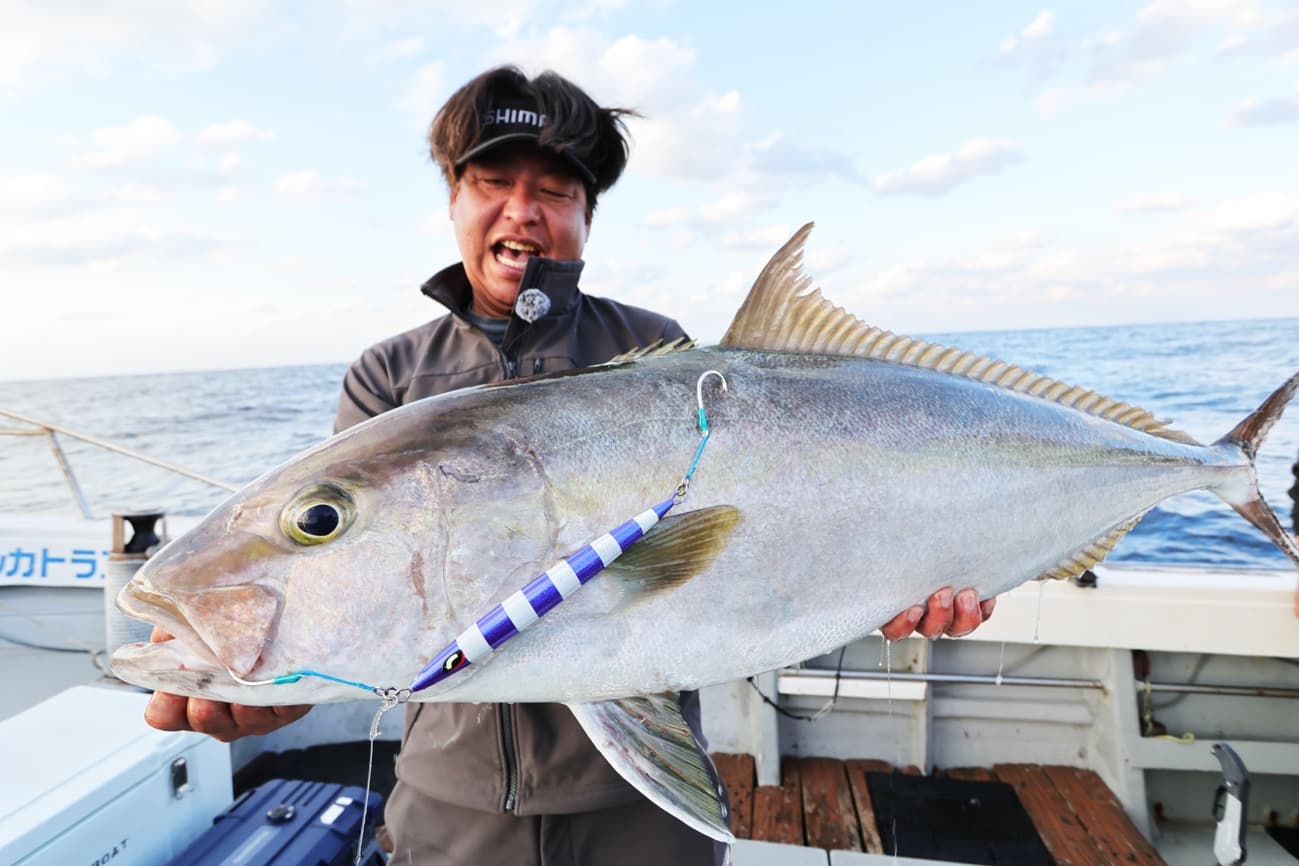
In the late afternoon, I got a pulling bite. I quickly responded to the strong pull. I caught 15 kg, which was my minimum goal for this fishing trip.
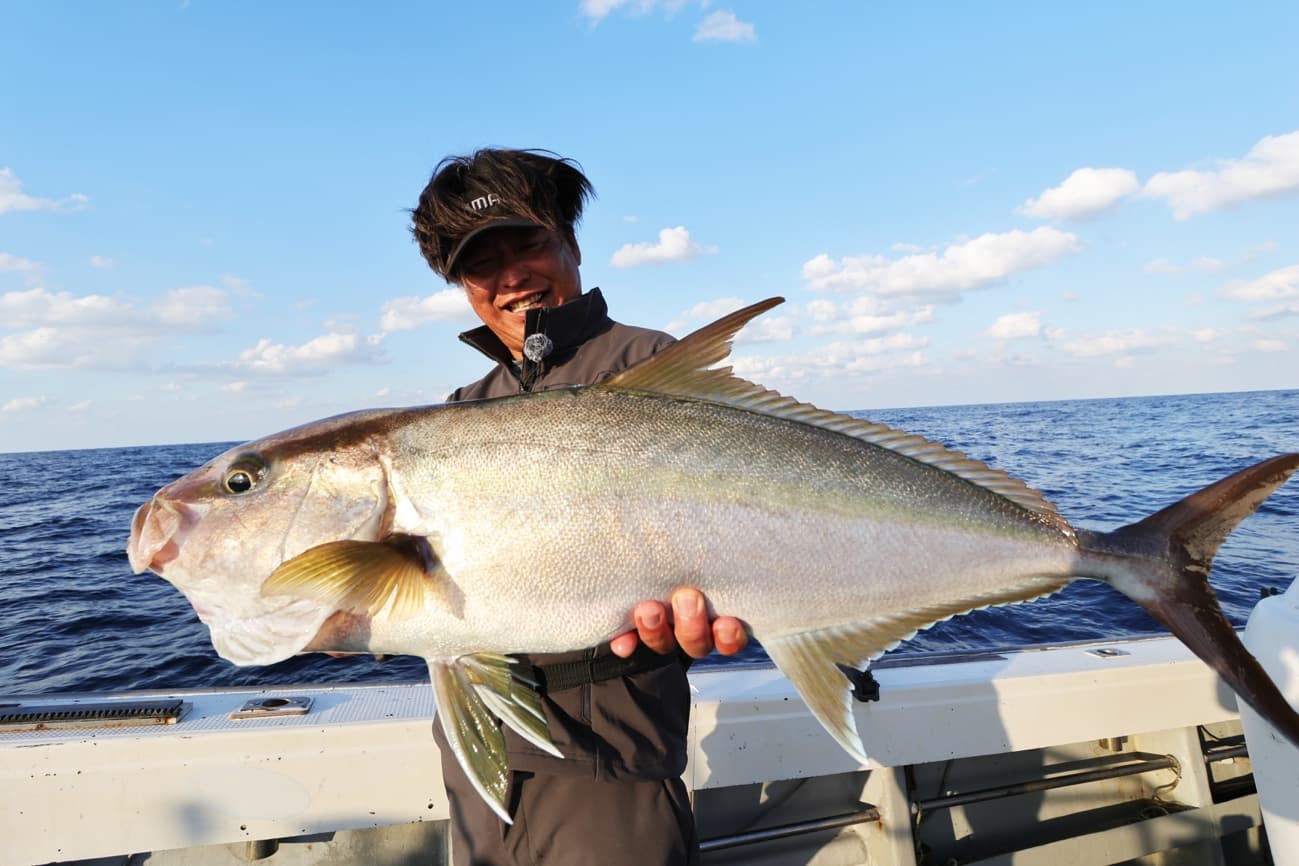
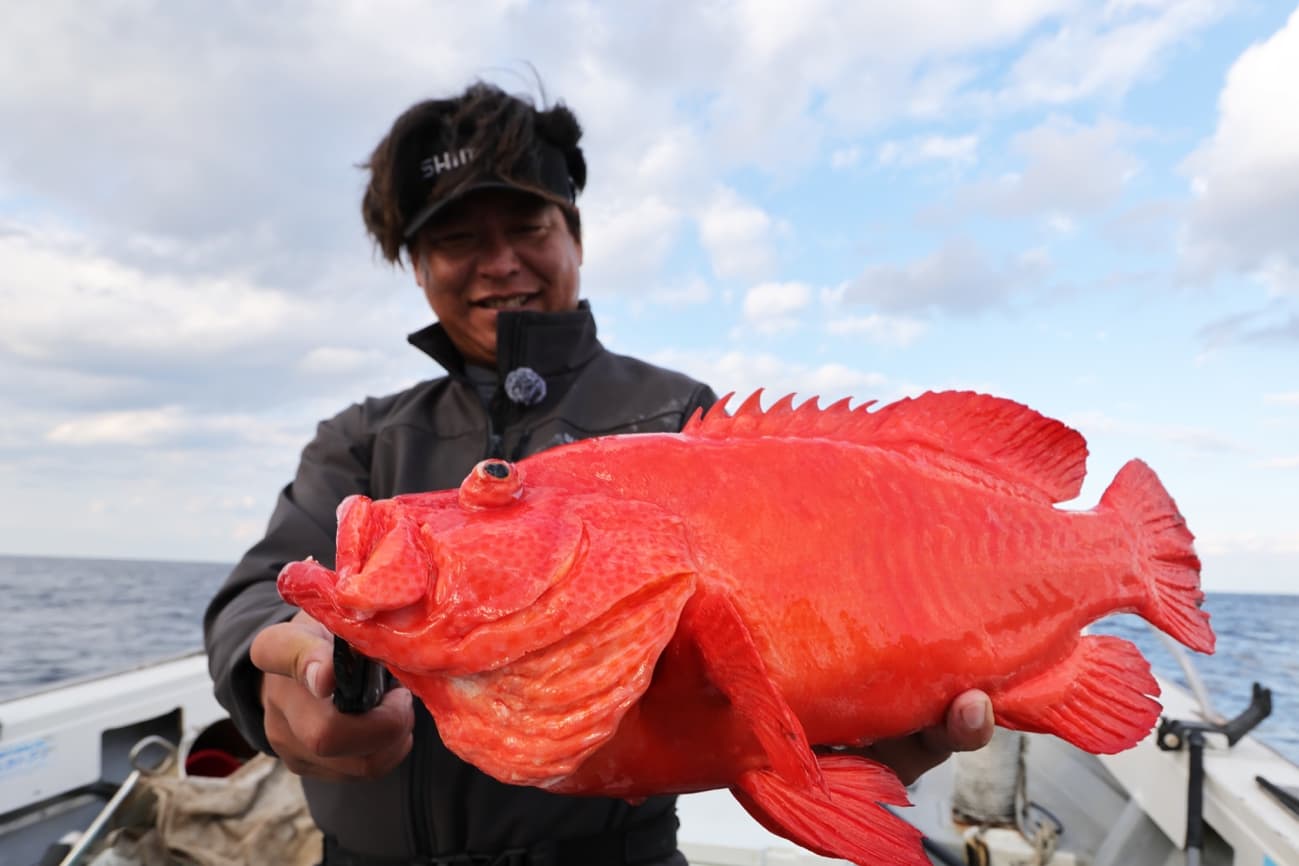
With skillful jig operation, we hooked a series of small greater amberjack even when the tide was slow. Various rockfish also hit as guests.
Why Type Slow J is recommended and the results of the third day’s fishing
We asked Mr. Yamamoto why he recommends the grappler.
First of all, I recommend the GRAPPLER to those who want to try slow fishing, because it is easy to pick up and has a solid performance. Also, the separate grip makes it easy to carry during expeditions.”
Flagship models are good because of their high performance, but many people find it difficult to have a large number of flagship models. However, with the Grappler, it may be possible to have a set of both front and back numbers. If you bring a different number of lures to the fishing spot, you can use different lures depending on the situation, and you will be able to capture more fish.
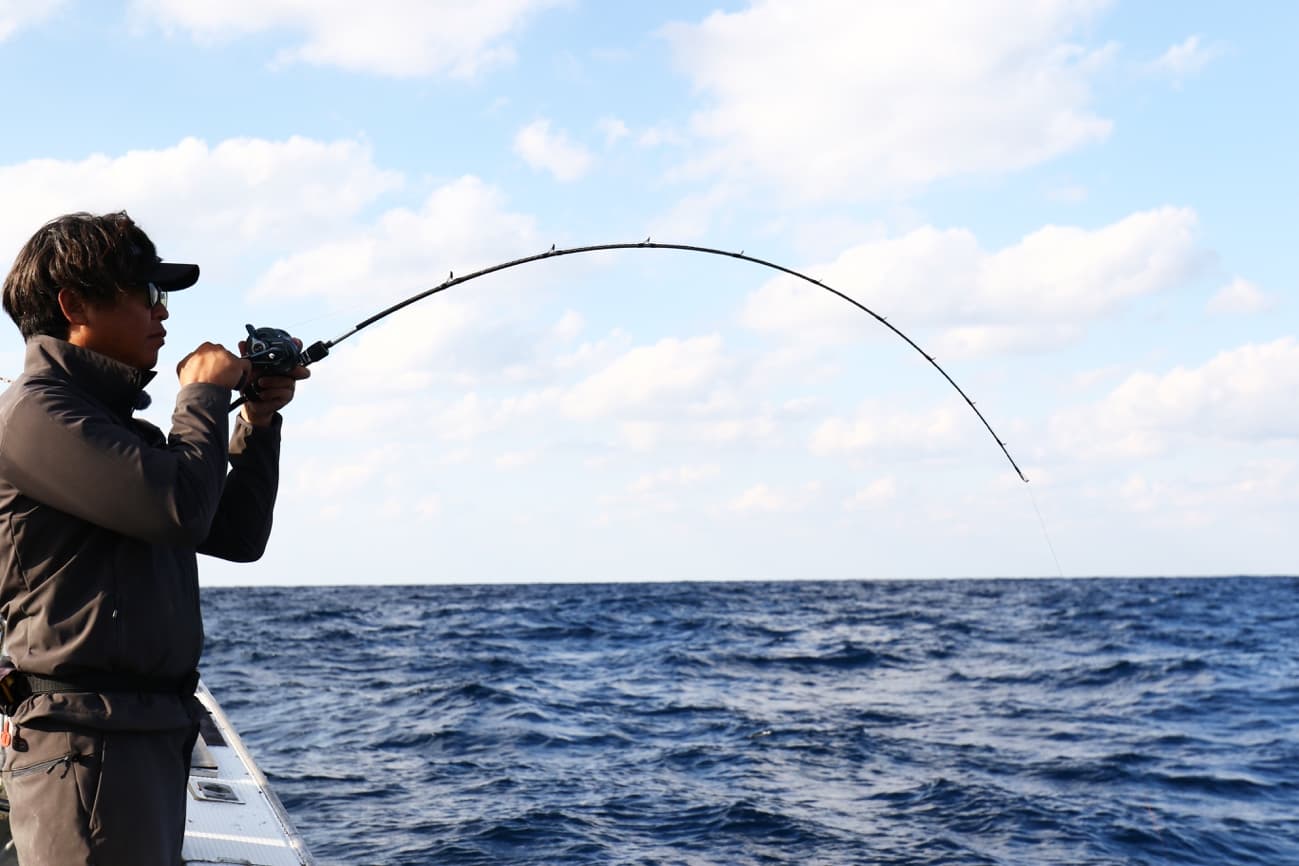
If you have different numbers of lures, you can use them in different situations. GRAPPLER’s are easy to use.
On the third and final day, we fished until noon due to the forecasted wind. Again, we started from deep water. We started at a depth of 220m. We started fishing at 220m depth, and we had a good start when a small greater amberjack hit the water. After that, small greater amberjack kept showing up one by one. Then, when we moved to a slightly shallower depth of 130 m, we got a big hit with four strokes from the bottom. Mr. Yamamoto instantly decided that it was not a greater amberjack and carefully reeled up the fish. He reeled up a good-sized rockfish. As a result, the fishing trip ended with a good-sized greater amberjack an dogtooth tuna, and a root fish.
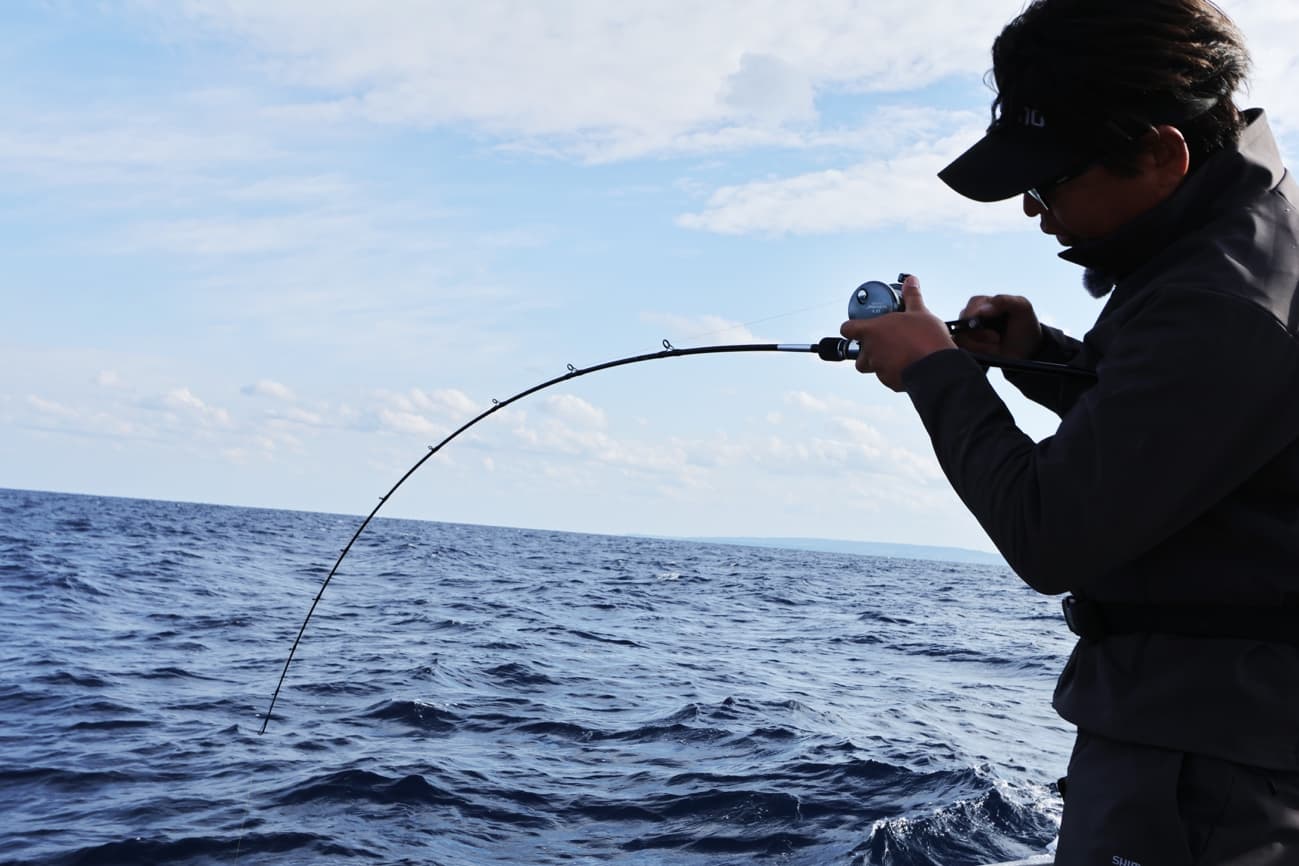
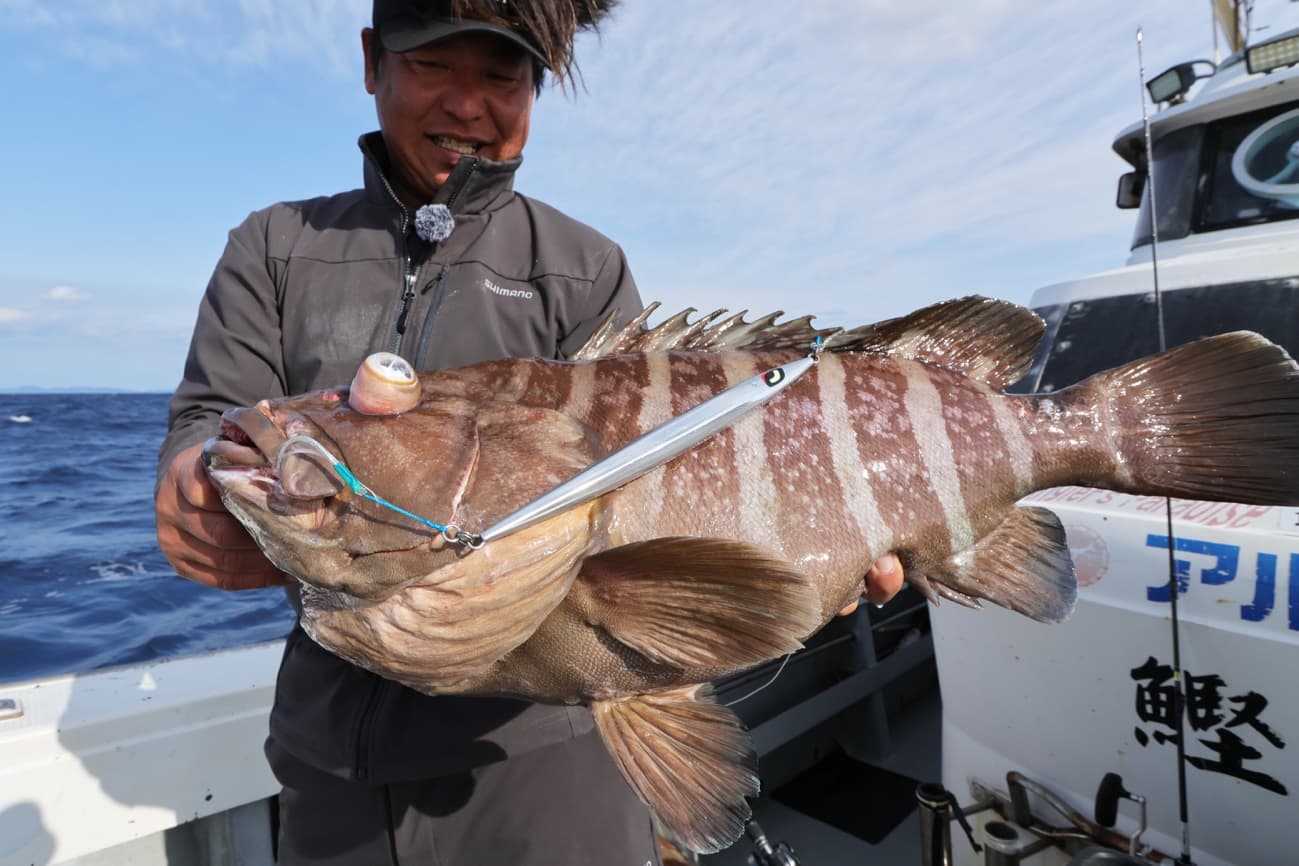
In the latter half of the trip, we also caught a good-sized rootfish, which was one of our targets. We caught a variety of fish, and the fishing trip was a good demonstration of the power of the GRAPPLER Type Slow J.
How to use the different types of lures.
The GRAPPLER Type Slow J has a lineup of six models, including the No. 5 and No. 6 used this time. We asked Mr. Yamamoto about the best way to use each model.
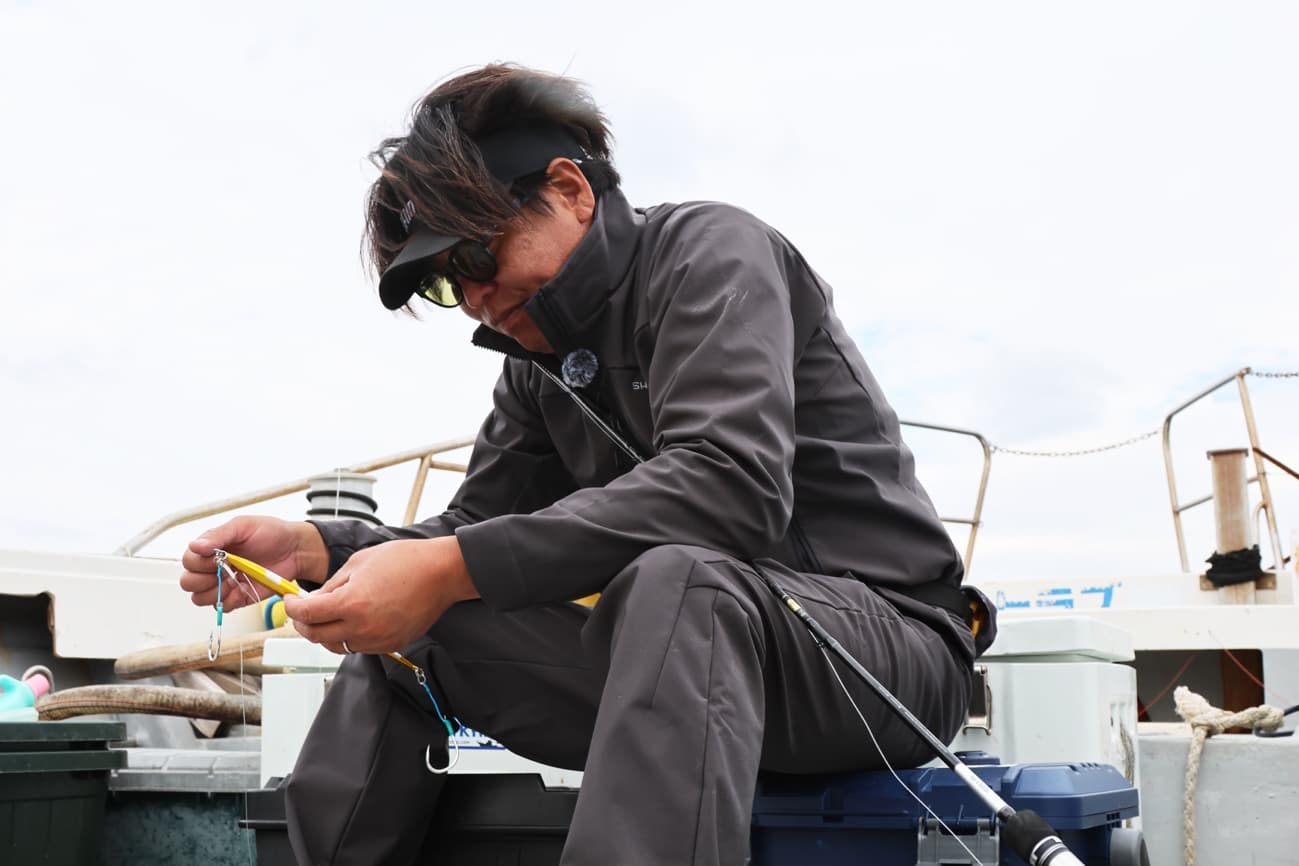
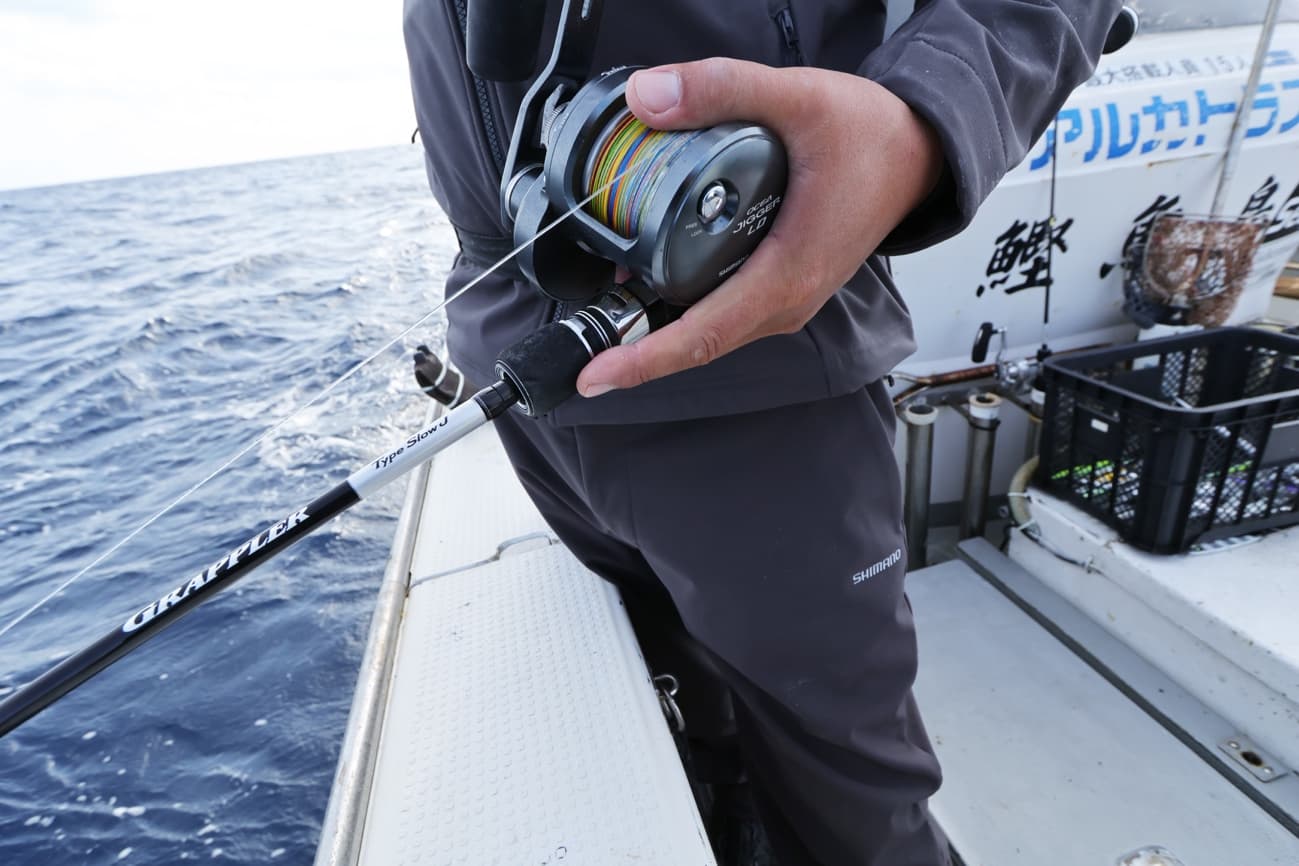
No. 1 is good for fishing at around 50m with a jig max. 160g. This model is suitable for light targets such as root fish, saber fish, and yellowtail in shallow water.
No. 2 has a max. jig weight of 200g and is suitable for fishing at 60, 70, and 80m. It is good for targeting yellowtails feeding on yellowtails in inshore waters and saber fish in shallow water and for saber fish in deep water. It is also good for targeting deep-sea fish in relatively shallow areas.”
No. 3 is a model that weighs up to 260 g and can be used in areas up to 100 m. It can be used for jigging in general from 60 to 100 m, and for fishing in mid to deep water up to over 200 m.
No.4 has a max. jig weight of 330g and can be used for jigging yellowtails up to 100m, jigging in tidal currents, and in mid- to deep-sea waters up to about 340m. It is also good for targeting yellowfin tuna in situations where the jig is falling straight down vertically.”
No. 5 is the best match for targeting amberjack and jigging for yellowfin tuna at depths of over 100 m or 150 m. It can also be used for jigging for bluefin tuna at depths of up to 340 m in mid-depth waters. If you want to target mid to deep water and drop the lure vertically, it can cover depths of up to 400m. It is also good for targeting bluefish at depths of up to 100m, using a 150g jig at a high pitch to make it bounce firmly, and for yellowtails in windy conditions when the boat is being swept away.
No. 6 is the strongest model in the series, with a max. jig weight of 500g. The No. 6 model is the strongest model in the series with a 500g jig max. It is used for targeting large fish on expeditions. It is easy to use at depths of up to 200m and is recommended for targeting deep amberjack and large root fish. Also good for medium-sized root fish in even deeper water. Because of its tautness, it may be selected in situations where you want to target yellowtail by firmly moving a heavy jig such as 300g in areas where the water is 100m deep.”
